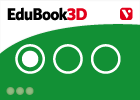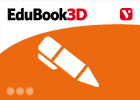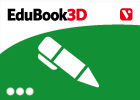Cargando...
Recursos educativos
-
Nivel educativo
-
Competencias
-
Tipología
-
Idioma
-
Tipo de medio
-
Tipo de actividad
-
Destinatarios
-
Tipo de audiencia
-
Creador
-

Final self-evaluation 04 - Spain: politics and territory
EduBook Organización
- 1819 visitas
Choose the correct answers: What is the principle of subsidiarity based on? What factor did the creation of autonomous communities take into consideration? What is a Statute of Autonomy? What steps must…
-

Look. Land use
EduBook Organización
- 1802 visitas
Look at the images and do the activities: Describe how the land is being used in both of these photos of sprawling cities. List some elements you can see that are typical of sprawling cities. Why do the…
-

Calculate. Minerals (2)
EduBook Organización
- 1741 visitas
Manganese is a mineral formed at the bottom of the sea. It is found in the form of different sized nodules. If we know that each nodule grows by 2 mm every million years, how long will it take a nodule…
-

Final self-evaluation 06 - Plants
EduBook Organización
- 1736 visitas
Decide if the following statements are true or false: Plants make their own organic matter through the process of photosynthesis. ➝ The organic matter is made from a combination of water and the…
-

Final evaluation 10 - The Earth and the Moon
EduBook Organización
- 1725 visitas
Calculate the speed at which the Moon moves around the Earth; take into account the following facts: circular orbit, average distance of the Moon from the Earth is 385000 km, period of rotation is 28…
-

Question words
EduBook Organización
- 1 lo usan
- 1558 visitas
Choose the correct question word for these questions about what happens to Passepartout and answer them. Who What When Where Why How was Passepartout when he woke up? did he remember about what…
-

Context - Exit Test
EduBook Organización
- 1748 visitas
Answer the following questions. What is the author’s name? Where does the story take place? What time of year is it? What are the origins of Halloween? How do people celebrate Halloween today? Name…
-

CERN. Educational / The time machine : the LHC adventure is a journey through time ....
Xtec Organización
- 1602 visitas
Archaeological findings at one LHC site take us back some 1700 years. Civil engineers dug through rock that dates from about 208 to 144 million years, and the LHC's collisions will complete the…
-

Investigate. The United Nations
EduBook Organización
- 1608 visitas
If you want to know more about the UN, take a trip on the Cyber Bus and tour its main departments and works of art: http://www.tiching.com/64195 What is the only gift from an anonymous donor in the…
-

The carbon cycle
EduBook Organización
- 1592 visitas
The carbon present in living things comes from atmospheric carbon dioxide. Plants and algae take in carbon dioxide through photosynthesis. They use it to make the biomolecules which they need to grow.…
Te estamos redirigiendo a la ficha del libro...










